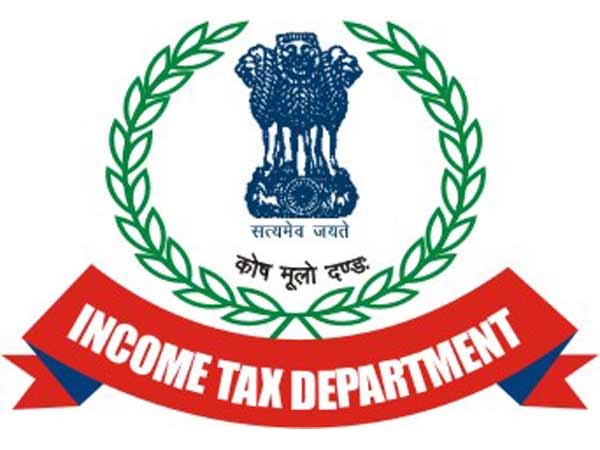When personnel from the
Rajasthan Police knocked on his door early morning on November 1, former State Bank of India chairman Pratip Chaudhuri didn’t even know about the case the uniformed enforcers of the law were talking about.
The former top banker at India’s biggest mass lender was not aware of any case against him anywhere in India. And he most certainly did not recall any ‘Garh Rajwada’ Hotel project in Rajasthan financed by the bank.
“They had a warrant and told me I had to come with them and I will know about the case only after I am produced in court. I said I was not a fugitive and went along with them and was produced in court,” Chaudhuri told ET over the phone.
Chaudhuri did not expect to spend the next eight days – through the Diwali week – in judicial custody. But that is exactly what happened, his arrest overshadowing the celebrations and grabbing prime column inches nationally.
“I knew the case against me was frivolous and will not stand in the court of law. But the worrying part was this was the holiday week and the courts were on holiday and judges were on leave. On the third day, I took the advice to take medical facilities due to my blood pressure and hypertension issues,” Chaudhuri said.
The Case in Question
Chaudhuri was arrested from his Delhi residence by the Rajasthan Police and taken to Jaisalmer on November 1. His subsequent bail application was rejected by the magistrate officer. The case refers to the ‘Garh Rajwada’ hotel project in Jaisalmer, financed through a ₹25-crore loan by State Bank of India (SBI) in 2007. Since the project was not completed for three years and a key promoter passed away in April 2010, the account slipped into an NPA in June 2010.
The bank’s recovery or revival efforts failed to succeed. So, SBI sold the loans to Alchemist Asset Reconstruction Co (ARC) in March 2014. Pratip Chaudhuri, and the co-accused from the ARC, faced charges of cheating (Section 420 of the Indian Penal Code), criminal breach of trust by a public servant (Section 409), and punishment for criminal conspiracy (Section 120 B) at the local court in Rajasthan. The erstwhile promoters, Harender Singh Rathore and Lokendra Singh Rathore, had alleged that the hotel property worth ₹200 crore was sold for just ₹25 crore due to a nexus between SBI and Alchemist ARC.
Lokendra Singh Rathore, the co-promoter in the firm alleged a connivance between Alchemist officials and SBI officials and said that he will continue to fight the case in court.
“Out of the ₹23 crore disbursed by SBI we had paid back more than ₹5 crore in six equal EMIs. We had requested another ₹6 crore from the bank which it delayed between 2008 and 2010. In 2010, after the death of my father the account downgraded into a NPA even as we were still waiting for fresh funds from the bank. This whole property has been taken by Alchemist ARC at ₹25 crore in 2013 and further sold to an NBFC called GFC for ₹40 crore in 2017. Today, its value is ₹200 crore. We have full faith in the judiciary will will continue to fight in court,” Rathore said.
To be sure, Chaudhuri had retired from the bank six months before the sale of the loan account to the ARC – in September 2013.
The police action appears to have run counter to a Department of Personnel & Training (DoPT) circular published about a couple of months ago laying down standard operating procedures (SOP) for action against government officials. It specified that police officers have to seek prior approval under the newly inserted Section 17A in the Prevention of Corruption Act (2018). The amendment also details stage-wise processing of information by the police officer concerned and also a checklist that must accompany an application under Section 17 A.
Chaudhuri said as his case showed, such rules exist only on paper and there is no judicial recourse once push comes to shove.
“Like eminent jurist Palkhivala has said, ‘there are too many laws and too little justice.’ Forget DoPT, even the Reserve Bank of India (RBI) rules also say that independent directors cannot be accountable for decisions taken by the companies they are in, but nobody follows these rules,” Chaudhuri said. “Some chief judicial magistrate in small-town in India can just issue a non-bailable arrest warrant disregarding a Supreme Court order and there is no accountability for that.”
Systemic Challenges
Chaudhuri’s arrest is the latest in a list of such actions by police personnel against bankers.
More than three years ago, Bank of Maharashtra CEO Ravindra Prabhakar Marathe was dramatically arrested while on his morning walk. Also arrested were executive directors Rajendra Kumar Gupta, former managing director Sushil Muhnot and zonal manager Nityanand Deshpande in connection with a case registered in October 2017 against developer Deepak Kulkarni, his wife Hemanti Kulkarni, son Shirish and others in a ₹2,043.18-crore fraud where it was alleged that they extended fraudulent loans to Pune’s DSK Group.
However, the Pune police filed a closure report within four months citing lack of evidence and the officials concerned were reinstated.
Summons by the police are not just to public sector bankers. On Thursday, the EOW of the Mumbai police began a probe into charges of wrongdoing by former ICICI Bank officials in a case where hotelier Vishal Sharma has alleged he was duped of ₹120 crore by the officials and an ARC. The loan itself dates back to 2011. Bankers say limited understanding of the bad loan business is itself a challenge.
“A loan gone bad and sold for half the price does not mean that the bank has sold it for a song. It means that at that point in time, recovery from that asset is limited. It is always likely that an ARC which buys it finds a better price. It does not mean that the sale should not have happened in the first place,” said a senior banker.
SBI has said that all due processes were followed by the bank after a key promoter of the hotel project passed away in April 2010 and the account slipped into an NPA in June 2010. In a statement, SBI said the sale to Alchemist ARC was done through a laid down process. Further, the account was taken to the bankruptcy court and was acquired by an NBFC in December 2017.
“In all these kinds of cases, promoters allege different things at different times to prevent the asset from being sold. Nobody will ask what shape the hotel was in when it was auctioned. The promoters did their best to halt proceedings even going up to the SC which had dismissed their petition. This arrest on the orders of a chief judicial magistrate after the highest court has okayed the transaction is a complete eyewash,” said a person closely involved in the case.

 How To Access Annual Information Statement (AIS) On e-Filing Portal?
How To Access Annual Information Statement (AIS) On e-Filing Portal?

